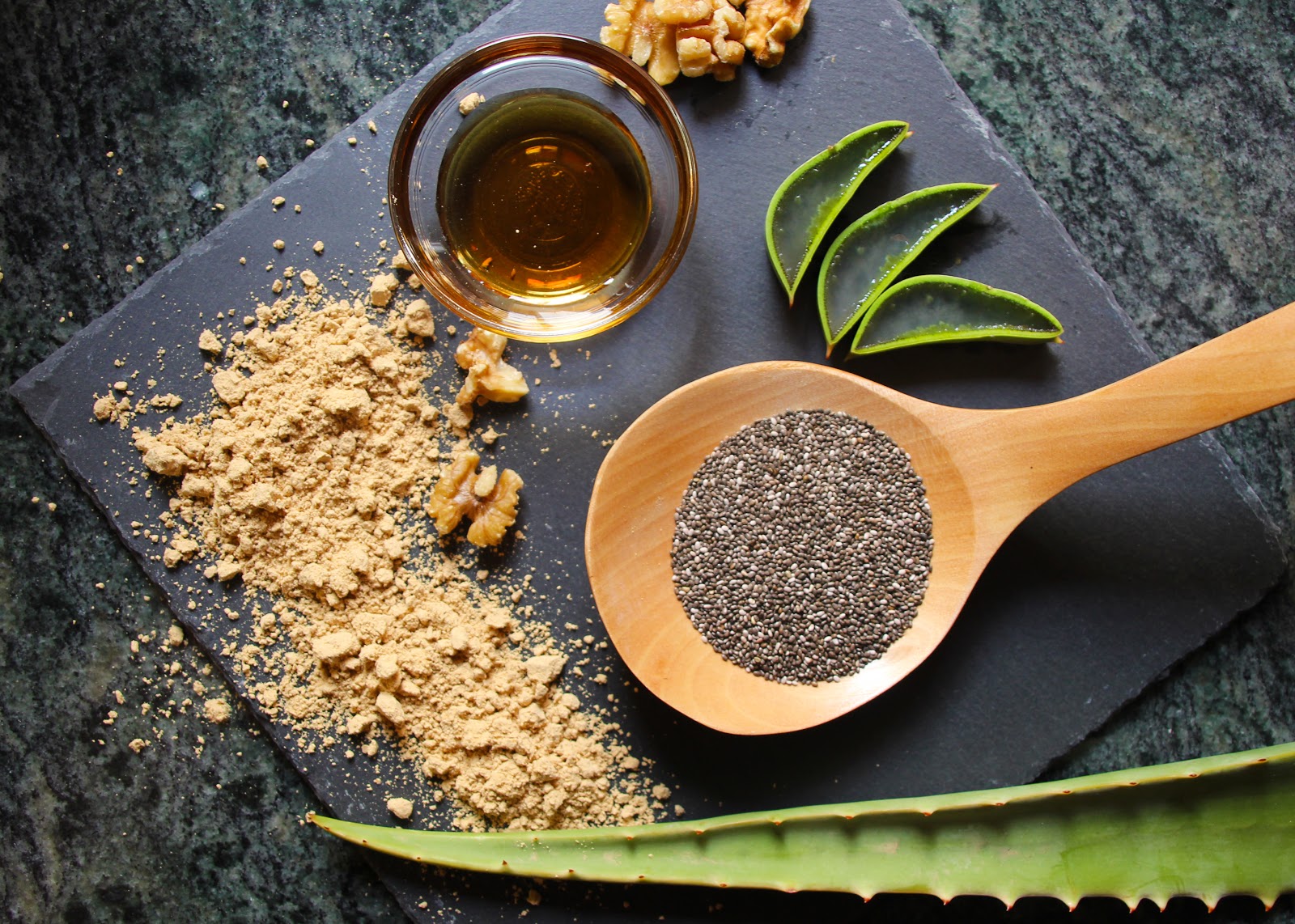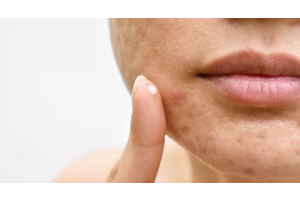Local Storage seems to be disabled in your browser.
For the best experience on our site, be sure to turn on Local Storage in your browser.
Superfoods: Moringa, Chia, Royal Jelly, Gofio and Aloe vera

What is a superfood?
We can say that the foods mentioned in this category contain greater amounts of nutrients than other common foods, including vitamins, minerals, antioxidants and phytonutrients, but there really is no academic definition as such, because it is really a term used in marketing.
Based on this definition, Aloe deserves to be called a superfood because, as we already know, aloe vera is an excellent source of nutrients to present vitamins and antioxidants, calcium, proteins and complex polysaccharides of plant origin.
In this week's article we will compare the characteristics of some superfoods with the Aloe vera, our objective will not be to choose the best or most complete, but the most suitable to our requirements at a given time.
Moringa
The moringa is a tree originally from India, usually measuring about 10 meters high. It is one of the most complete foods that exist today, contains Vitamin A, B1, B2, B3, B5, B6, K, E, C, large amount of potassium, chromium, copper, magnesium, manganese, iron, phosphorus, zinc, proteins and essential amino acids.
In addition to being a very complete food, moringa is considered a natural antibiotic, is a plant with multiple uses and medicinal benefits. Its anti-inflammatory, antimicrobial, antioxidant, anticancer, cardiovascular, and hepatoprotective properties make it useful in the treatment of various diseases. It combats diabetes, cholesterol, hypertension, asthma, and cough, aging, bronchitis and kidney, and liver diseases. It works as an anti-inflammatory, eliminates fungi, is used as an analgesic, is a great diuretic, fights anemia and eye problems. Anti-microbial, Anti-bacterial. Combats arthritis, hepatitis and the formation of cancer cells.
Chia
The chia is an edible seed of the plant Salvia hispánica of the family of the mint that grows in abundance in the south of Mexico, extending its culture to many other parts of the world like to Australia, at the moment one of the main producers. Despite recent popularity, small black and white seeds were a major component of Aztec and Mayan diets in pre-Columbian times and were the basic survival ration of Aztec warriors.
The name comes from the Mayan word "Chia" which means strength.
100 grams of dried chia seeds contains 42.1 grams of carbohydrates, 34.4 grams of fiber, 16.54 grams of protein, 16 milligrams of sodium, and 5.80 grams of water, 0 milligrams of cholesterol and 30.74 grams of fat.
The calorie intake of 100 grams is 486 calories, 24% of the total daily requirement.
It also contains some important vitamins: Vitamin B-3 (8.8 mg), Vitamin A (54 mg) or Vitamin B-9 (49 mg).
Chia seeds are rich in antioxidants that help protect us from free radicals, aging and cancer. But perhaps that's why chia seeds are so popular recently is because they help you lose weight. Because of the combined action of fiber, omega-3 fatty acids and protein reduce other food cravings by making us feel full faster.
But there are many more benefits associated with regular chia consumption. For example, it aids digestive health by regulating intestinal function, is a natural vegetable source of omega-3 fatty acids, helps prevent blood sugar rises, slows the rate at which our bodies convert carbohydrates into simple sugars, is a natural source of calcium, phosphorus and manganese, vital to bone and oral health, and prevents osteoporosis. These nutrients also help maintain a healthy weight and prevent hypertension, and are important for energy metabolism.
Chia seeds are also a great source of protein for vegans and vegetarians, rich in tryptophan, an amino acid that helps regulate appetite, sleep and improve mood.
Royal Jelly
Royal jelly is a liquid substance made by the bee itself that serves as food for worker larvae during the first days of their lives and for queen larvae forever. So extraordinary is its ability to stimulate growth that in three days the weight of a larva multiplies by a thousand. Although many components have not yet been analyzed, these data are revealing enough to understand the important contribution of nutrients that take or apply to the skin Royal Jelly.
Royal Jelly has a high concentration of nutrients:
- Water: 60%. The most abundant substance in Royal Jelly is water.
- Proteins: 13%. It is a food very rich in proteins and contains essential amino acids.
- Fatty acids: 5%. The fatty acids of Royal Jelly have a great biological value, thanks to its antifungal and antibacterial properties that give Royal Jelly its great conservation capacity.
- Carbohydrates: 13%. They are simple sugars such as fructose, glucose, maltose, etc.. However, it is recommended for people with diabetes.
- Vitamins: Contains a good amount of vitamins such as A, C, D, E and especially vitamins of the B group (B1, B2, B5, B6, B8, Folic Acid).
- Minerals: The contribution of minerals and trace elements such as iron, sodium, calcium, copper, potassium, magnesium, etc. should not be forgotten.
- Other elements: There are many elements of Royal Jelly that have yet to be discovered and others that have already been analysed, such as the hormones that boost the action of vitamins.
The health benefits are many: It provides a great amount of energy and notably improves fatigue, stimulates the nervous system, strengthens the immune system, increases oxygenation of the brain, increases the number of red blood cells and leukocytes, improves the state of the skin, its hydration and elasticity, delaying aging, promotes nerve impulses in the brain thanks to acetylcholine, contains liver-protective substances, stimulates fertility, stimulates growth of children, increases appetite, regulates blood pressure (hypertension and hypotension), is vasodilator, very beneficial for people with coronary heart disease.
Gofio
The name gofio refers to a flour made from roasted cereals -mainly corn and wheat- that has always been part of the traditional Canarian diet. It may not be one of its best-known traditional dishes, but that does not mean that it is not as popular or more popular with the local population and that it can also boast of having a low caloric power, providing numerous essential nutrients and enriching the diet.
Gofio flour is totally natural. It is made only from the stone milling of whole roasted grains from different cereals, which is given the final touch by adding a pinch of salt. The texture is reminiscent of that of white flour, although it has a darker colour, which varies depending on the type of grain used in its preparation and the degree of roasting. In this sense, experts say that the lower the speed at which the beans are ground, the higher the quality.
From a nutritional point of view, gofio is a food with interesting values. It has a high content of vitamins B -B1, B2 and B3-, although it also has a high concentration of vitamins D and C. As far as minerals are concerned, it is rich in phosphorus, iron, calcium or potassium, the amounts of which obviously vary depending on the types of cereals included. The best represented is zinc - its usual consumption provides 10% of the recommended intake for adults. However, it also has significant amounts of sodium, so people with renal dysfunction should moderate their intake. It is especially rich in omega 6, whose intake is very important because our body does not have the ability to synthesize it, so you have to get it from outside. This essential fatty acid contributes to the reduction of cholesterol levels and the development of cardiovascular diseases.
It is also one of the best natural allies of athletes, because it has a high content of complex carbohydrates, whose function is to provide enough energy to practice any sport or effort without signs of fatigue.
Aloe vera
We have already talked about the numerous properties of Aloe as a dietary supplement.
Many researches and chemical analyses reveal that Aloe vera contains, among other things, a large amount of anthraquinones, enzymes, hormones, lignins, minerals, sugars and vitamins.

